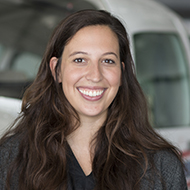Avoiding midairs
Tools for making flying safer
See and avoid
The tool we pilots rely on the most is our eyesight, and "see and avoid" is still the best way to avoid other traffic. Always build a visual scan into your flights in both busy areas and in cruise. Before you maneuver in a practice area, perform clearing turns. When you are turning onto final from base, always make sure that final is clear. Assure you are in a position to view the approach path and may need to maneuver the aircraft (i.e., lift or lower a wing) to have an unobstructed view. Also, make sure you have your lights on, especially in busy areas. Having more lights on than normal in busy areas can help you to see and be seen more easily. Better yet, a pulsing light makes you easier to spot.
Follow procedures
Follow procedures for both towered and nontowered fields and cruise, using published traffic patterns and altitudes. It is important that people know where to look to find you and if you’re in generally the right spot and correct altitude that’ll make collision avoidance that much easier. In cruise, follow the rules for cruising altitudes.
Communicate on the radio effectively, and make only the concise, necessary calls, including your tail number and possibly color to help other traffic distinguish your aircraft. Simply stating your type of aircraft and color (white low wing, white high wing, white experimental) might not be unique enough for other traffic to distinguish your calls from another aircraft, and using a tail number can help in this case. Don’t tie up the frequency with chit chat or unnecessarily long calls. It is a push-to-talk, not a push-to-think about what you’re going to say then say it in twice the time needed.
Finally, follow right-of-way rules. Remember that in converging aircraft situations, both aircraft should turn right. In the traffic pattern, the lower aircraft has the right-of-way to land (but please don’t be the jerk in the pattern that takes advantage of this). When you’re overtaking, overtake on the right. Try to maintain visual contact with the aircraft during the overtake, lest they begin a maneuver while you are next to them.
It is push-to-talk, not a push-to-think about what you are going to say then saying it in twice the time needed.
Use your resources
Resources such as ATC and ADS-B can help improve your situational awareness and reduce the possibility of a midair. With VFR flight following, ATC can advise you of traffic, workload permitting, which is extremely helpful in busy terminal areas where ADS-B is required.
Even if you aren’t in touch with ATC, it is a good idea to plug in the CTAF frequencies of airports you are nearby or flying over during cross countries to give calls and get a better idea of other traffic.
Stay alert in busier airspace
Busy airspace like the few miles surrounding an airport, practice areas, landmarks, and VFR corridors, are all areas where you should be extra alert. In conditions like this, keep your scan going, and consider implementing a sterile cockpit if you’re flying with passengers to allow you to better focus on maintaining situational awareness. When practicing maneuvering consider selecting a non-cruising altitude (e.g., 3,200 feet msl instead of 3,000 feet msl or 3,500 feet msl).
While midairs remain unlikely despite recent news, following these tips can help all of us reduce the risk of collisions. Our eyes are the main defense against midairs, and technology, while beneficial, is a tool to aid not replace them.



